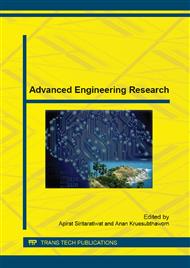p.160
p.164
p.168
p.172
p.176
p.180
p.184
p.189
p.195
On the Realization of CMOS Current-Controlled Current Conveyor Transconductance Amplifier (CCCCTA) with Linear Control of gm
Abstract:
In this paper, arealizationcurrent controlled current conveyor transconductance amplifier (CCCCTA)is presented astheactiveelement.Thisdesignwas based on aCMOStechnology of AMIS 0.35μm (MOSIS).The PSPICE simulation was used to study the performances of the proposed circuit. It was found that the abilities of differential-pair CCCII circuit and Electronically current-tunable (EOTA) can be achieved using the supply voltages of ±1.5volts and the transconductance gain of the circuit can be linearly tuned.
Info:
Periodical:
Pages:
176-179
Citation:
Online since:
August 2015
Authors:
Keywords:
Price:
Сopyright:
© 2015 Trans Tech Publications Ltd. All Rights Reserved
Share:
Citation:


